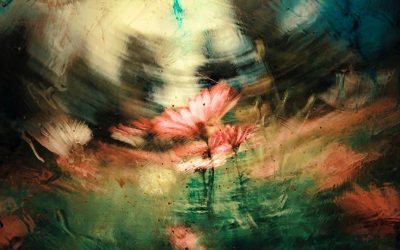The new year is before us. Let’s find out what inspires us, on a deep and meaningful level.
Find your own artistic obsession this week. Latch onto another work within your artistic medium that you admire. If you are laying out a new garden design, then search out a garden that emotionally speaks to you. If you are writing a novel, rummage through your bookshelves to come up with a title that can become deeply rooted in your psyche. This choice doesn’t have to be perfect. It is not set in stone. It can change throughout the course of the year, as you refine your artistic project. But start with this work as your spark of inspiration.
Aim high when selecting this obsession. You are going to be wrestling with this source of inspiration for a while. You will become emotionally entwined with it. It may frustrate and set you on edge on some occasions. Pick a model that you can engage with.
Sometimes the most powerful creative model belongs to another time altogether. I would encourage you to search out an artistic work from a far-flung era. There is something powerful in knowing that the only means of communication between two artists lies in their artistic endeavors. The work you will be creating is a response to that conversation.
The painters Francis Bacon and Diego Velazquez had one of the most intensely involved relationships that I can think of, even though Bacon lived in the 20th century and Velazquez died in 1660. The older painter’s portrait of Pope Innocent X loomed large in Bacon’s mind. He painted a direct response to this older work after going deep into the contours of this model. It’s worth checking out the differences and similarities between these two paintings. It should give you some inspiration, for the more recent work is a true response to the portrait from long ago. It stands as its own powerful rendering – but still embeds itself within a tradition of portraiture. Velazquez became Bacon’s guiding touchstone. Bacon wrote to a fellow artist while he was deep in the throes of painting his portrait that “it is thrilling to paint from a picture that truly excites you.”
Find that work of art that excites you. I had the good fortune of meeting Kimon Friar when I was about sixteen years old. He was the influential director of the Poetry Center in New York City in the 1940’s and was also the translator of Nikos Kazantzakis works into English. Over the course of our correspondence, Friar encouraged me to read John Keats. He explained to me that when he was a teenager, he read all of Keats’ poems in the order that the poet had written them, over a century ago. He then wrote letters to the long-dead Keats, critiquing his work. He explained what he admired about each poem and what aspects of the poem fell short, in his estimation. He did, however, offer up suggestions for how Keats could improve upon those shortcomings, if Keats was so inclined to pick up a pen in the afterworld. Friar even went so far as to get his own death mask made on the same day Keats died, over a century between them, as a way to memorialize their poetic relationship.
Perhaps this sounds a bit loony – but you should get used to the word. Finding your artistic obsession will lead to an intense emotional relationship. All that energy will be put to good use as you further develop your creative endeavor over the next twelve months. Enjoy the prospect of discovering your own.




